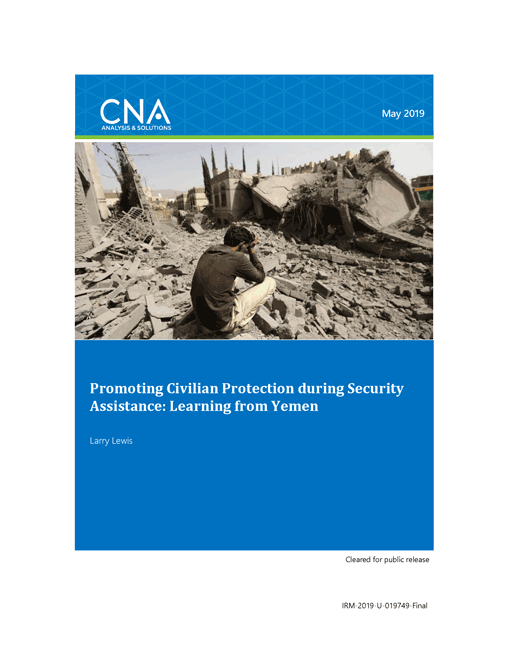For four years, the United States provided the Saudi-led coalition with military equipment and assistance used in its campaign in Yemen. During that time, the US has wrestled with and debated both the legality and wisdom of its support. Saudi-led coalition airstrikes have killed thousands of civilians while crippling hospitals and critical infrastructure, contributing to a humanitarian crisis in Yemen of a magnitude not seen since World War II, including widespread famine and a cholera epidemic. Meanwhile, in the midst of this crisis, the terrorist group Al-Qaeda in the Arabian Peninsula (AQAP) has solidified its grasp on territory and resources. With civilian casualties from US-provided bombs generating increasing hostility in Yemen toward the US, the conflict has also increased AQAP’s ability to act against the US and its interests.
After four years of conflict in Yemen, the US should be asking: what lessons can be learned from four years of support to the Saudi-led coalition? In light of the significant civilian protection concerns seen in Yemen, is there a way to get better outcomes from security assistance activities?
This report aims to answer those questions. We identify two gaps in policy and information, respectively, and answer the timely issue of better protecting health care in the midst of armed conflict.
A policy gap: the fragmented US approach to assistance
We first examine the nature of US support to the Saudi-led coalition, including arms sales, operational support, and steps taken to positively influence the conduct of the campaign. The latter efforts temporarily reduced the frequency of strikes resulting in civilian casualties, while also improving the understanding of root causes of civilian casualties from those strikes. However, those efforts were not sustained over time. Meanwhile, operational support and arms sales to the Saudi-led coalition continued, with the US struggling to maintain awareness of how its support and weapons were being used.
This fragmented US approach resulted in unmitigated civilian harm (civilians killed, wounded, and damage to infrastructure and civilian objects including hospitals) as well as reputational damage—a common perception that the US was morally, if not legally, complicit in the tragedy in Yemen, where civilians were harmed by US-provided bombs, aircraft, intelligence, and fuel.
This situation continued to be unaddressed because current policies, such as arms transfer policy and the Leahy law, are not sufficient for addressing civilian protection concerns such as were seen in the Yemen conflict. In this report, we provide a policy framework for including civilian protection considerations as part of security assistance. Our new framework for advancing civilian protection in security assistance includes the following functions:
Assessment of partner capabilities and risks. This includes analysis of the professionalism and operational experience of the force; past concerns regarding IHL violations, civilian casualties, and human rights violations; proficiency in targeting and weaponeering; available capabilities for civilian harm mitigation; and proficiency at the operational level. Some of this is already done within the USG, but it is not brought together comprehensively.
Steady state training and education on civilian protection. Security assistance involving the use of force should be accompanied by training and education in civilian protection, tailored to the particular partner’s capabilities and risks as captured in partner assessments. This foundational work is provided in peacetime in the event the partner will be involved in hostilities.
Advisory and mentoring support in combat operations. When partner forces enter into a combat role, in addition to training and education, US advisors should work with them to help with planning, tactics, operational approaches, and strategies for protecting civilians. This should also include tracking civilian casualties and determining patterns of harm to better inform advisory efforts. In the midst of operations, advising and training should be tailored to specific capabilities, risks, and observed patterns of harm, rather than general subjects such as basic targeting doctrine.
This framework could reduce or halt operational assistance in the face of civilian protection concerns, while continuing or increasing mentoring and other assistance to improve the conduct of operations. This is a remediation approach: the expectation is that operational assistance and provision of defense items can be restored once concerns are satisfactorily resolved. This approach avoids the difficulty of determining whether a partner is complying with international humanitarian law (IHL): decisions are reached based on negative operational outcomes, which are easier to assess. We note that this process is to be exercised in addition to current arms sales requirements involving civilian protection: IHL compliance and Leahy vetting; it will serve as an additional layer of protection and does not detract from existing policies.
Download reportDISTRIBUTION STATEMENT A. Approved for public release: distribution unlimited. Public Release. 5/8/2019
Details
- Pages: 62
- Document Number: IRM-2019-U-019749-Final
- Publication Date: 5/8/2019
